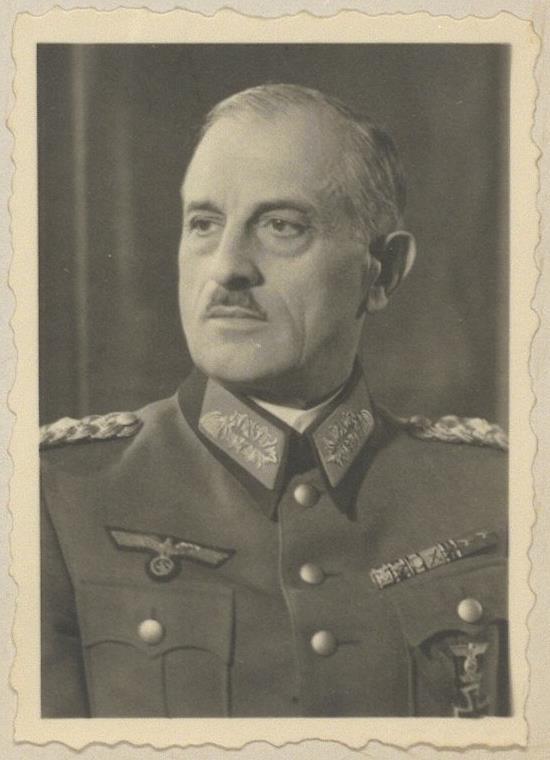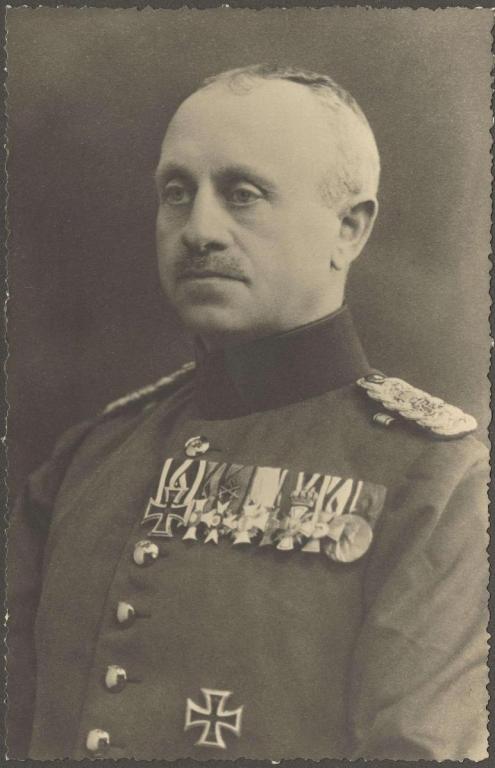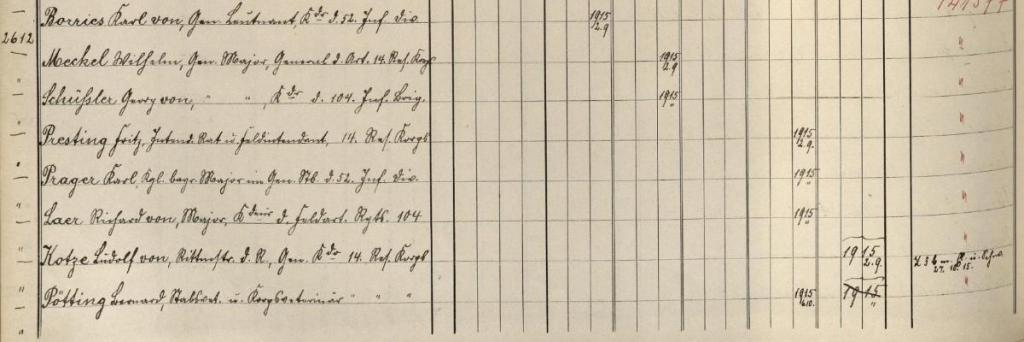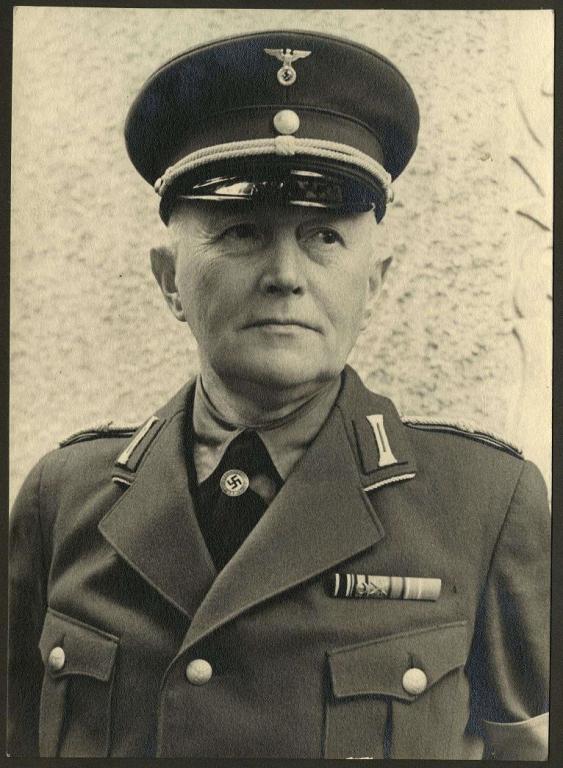-
Posts
4,908 -
Joined
-
Last visited
-
Days Won
97
Content Type
Profiles
Forums
Blogs
Gallery
Events
Store
Everything posted by Dave Danner
-
Gottfried Rommel, born on 2 October 1878 in Grunbach, Schorndorf, died of wounds on 30 September 1918. According to the Militär-Kabinett, the HOH3X was awarded on 8.10.1918. His death was apparently not confirmed until 1919, so the award, even though posthumous, appears to have gone through. He was commissioned a Leutnant der Landwehr-Infanterie I. Aufgebot on 30.10.1914 and received the WF3bX on 22.8.1916.
-
Tiedemann from RFAR 3 should be Eberhard, 18.10.1913 Lt.d.R. (VI Berlin) d. FAR 38. He was wounded in 1915 as Adjutant of I./RFAR 3. That Abteilung was formed on mobilization by FAR 38. He was born in Breslau. Given the Berlin and Breslau connection, he may be Rechtsanwalt und Notar Paul Hermann Eberhard Tiedemann, *15.8.1882 in Breslau, †3.10.1941 in Berlin, although 31 seems a bit old for a newly commissioned Lt.d.R.
-
According to the Mitteilungen of the IR 47 Offizierverein, Rudolf Hachmann, previously in IR 418, was Führer I./IR 398 from June 1917 on, then went to Ers./FR 37 in November 1918, so his mid-1918 HOH3X should be with IR 398. Below is what information I have on some other IR 418 HOH3X-Träger: Büttner, Karl Emil Julius Max, *6.4.1875 in Guben; als Portepée-Fähnrich in das GR 12 eingetreten, 18.6.95 ausgeschieden, 20.5.96 als Portepée-Fähnrich in das IR 59 wieder eingetreten, 17.4.97 Sek.Lt. im IR 59, 1898 in das IR 111 versetzt, 18.5.07 Oberleutnant, 27.1.13 Hauptmann, in das IR 173 versetzt, 1914 leicht verwundet als Chef der 2./IR 173, 1916 schwer verwundet als Chef der 2./173, 1917-18 Kommandeur des I./IR 418, September 1918 nach der Auflösung des IR 418 in das IR 116 versetzt, 1918 verwundet als Chef der 9./IR 116, Major a.D.; HOH3X, Cent, BZ3bE, BadRJM Heizmann, Josef, *18.1.1894 in Bleibach, Waldkirch in Baden; 1916-18 Adjutant des I./IR 418, nach der Auflösung des Regiments am 15.9.18 kam das I./IR 418 zur 25. ID und Lt.d.R. Heizmann wurde in das LGIR 115 versetzt, am 20.10.18 vermißt, zur Zeit in der 10./IR 117; HOH3X (30.9.18), BZ3bX (10.5.16). - He's not in the Ehrenmal, so he was likely taken prisoner in October 1918. He's probably the 20.3.15 Lt.d.R. (Freiburg) mit Pat. v. 22.3.15 in LIR 72, but I'm not certain. Kammenhuber, Karl, *3.3.1889 in Dörrwiesmühle, Urweiler, St. Wendel; 1914 verwundet als Einjährig-Freiwilliger, FR 80, 6.11.15 Lt.d.R. (St. Wendel) im LIR 118, 1917-18 Führer der 3.MGK/IR 418, 1935 Landgerichtsrat in Saarbrücken, 1940 Oberlandesgerichtsrat in Heidelberg; HOH3X (30.9.18). Storz, Wilhelm, *2.1.1897 in Gnesen; 24.9.14 in das IR 47 eingetreten, 8.5.15 Fähnrich, 18.8.15 Leutnant, vorläufig ohne Patent (Patent 19.12.15), 23.9.16-19.3.18 im IR 418 (Fhr. 7./IR 418), 19.3.18 schwer verwundet, Leutnant a.D., 1.11.22 Dr.jur. et rer.pol. (Göttingen), Landgerichtsrat in den 1940, 1950 und 1960 Hannover Adressbücher. - There was a Kriegsverwaltungsabteilungschef Dr. Storz in the Militärverwaltung Frankreich in World War II, which may be him. Storz only lists the HOH3X and Verwundetenabzeichen in schwarz among his awards. However, IR 418's Esatzformation was IR 116, and when it was dissolved it was absorbed by the 25.ID and 25.RD, so there's a Großherzoglich Hessen connection which makes the HT a possibility for other IR 418 officers. Two companies of the I. Bataillon came from IR 76, so it is also possible that Büttner and Heizmann received the Hamburg Hanseatenkreuz.
-
There are only two officers with the Tiede/Tiedje name in the official sources. Both are identified as from the Fliegertruppe. • Lt.d.R. Tiede from Feldflieger-Abteilung 73 received the HOH3X on 27.1.1917. It was gazetted in the Staatsanzeiger on 5.2.1917 and in the Militär-Wochenblatt on 8.2.1917. • Lt.d.R. Tiedje on the staff of Kampfgeschwader 2 der OHL received the HOH3X on 22.01.1918. It was gazetted in the Staatsanzeiger on 1.2.1918 and in the Militär-Wochenblatt on 5.2.1918. The date of publication of the notice in the Hannoverscher Kurier (17.2.1918) would seem to fit the latter, but as you all have noted, Walter's bio shows no connection to the Fliegertruppe. There were three active Leutnants Tiede, 12 Leutnants der Reserve and one Leutnant der Landwehr. There was one Leutnant der Reserve Tiedje and two Leutnants der Landwehr. Leaving aside the active officers, these were: • Tiede, Karl, *23.10.1892 in Wersk; Lt.d.R. (III Berlin) d. GR 4, bei der Schutztruppe für Kamerun eingezogen, 1.6.15 schwer verwundet, in englischer Gefangenschaft; EK1 • Tiede, Felix Gustav Eduard, *25.2.1889 in Danzig, †14.6.1978 in Hamburg; 21.10.14 Lt.d.R. im RIR 61, im IR 175; Architekt in Danzig; EK2, ÖM3K • Tiede, Fritz, * in Leipzig; 7.11.14 Lt.d.R. (Erfurt) im RIR 82, IR 188, gef. 2.8.1915 bei Schratzmännle • Tiede, Max, *29.3.1882 in Berlin; 27.1.15 Lt.d.R. (II Berlin) im LIR 48, vermißt 24.2.1915 bei Przasnysz, für † erklärt • Tiede, Arnold Erdmann Willy, *2.10.1890 in Cottbus; 15.2.15 Lt.d.R. (Cottbus) des 1.GRzF; Stud.jur. an der Universität Rostock; MMV2 • Tiede, Ernst, *16.3.1891 in Johannisburg, Allenstein, gef. 18.5.1918 b. Nouvion; 13.4.16 Lt.d.R. (IV Berlin), zur Zeit bei der Feldflieger-Abteilung 55; Kandidat der Ingenieurwissenschaften an der Technischen Hochschule Charlottenburg; EK1 • Tiede, Fritz, *6.10.1882 in Danbarren, Insterburg; 13.5.16 Lt.d.R. (III Berlin) im Ers./RIR 35 • Tiede, _____, * [?]; 16.12.16 Lt.d.R. (II Trier) des IR 29 • Tiede, Richard, * [?]; 26.2.17 Lt.d.R. (Bremerhaven) der Fußartillerie • Tiede, Werner Eduard, *28.11.1886 in Berlin, †11.3.1927 ebd.; Mitglied des KFAC beim Stabe einer Kavallerie-Division, 3.5.17 Lt.d.R. (IV Berlin) des Kraftfahr-Bataillons; Fabrikdirektor, zivil. Ballonfahrer, Mitglied des Deutschen Luftfahrer-Verbandes; EK2 • Tiede, Heinrich Otto Thomas Karl, *24.9.1896 in Wismar, †23.12.1946 in Tscherepowez, UdSSR; 17.7.18 Lt.d.R. (Wismar) des FAR 54; Oberfrontführer der Organisation Todt • Tiede, _____, * [?]; 7.10.18 Lt.d.R. (II Königsberg) des FußAR 17 • Tiede, Georg, * [?]; 5.3.18 Lt.d.L.-Inf. I (Danzig) mit Patent vom 1.5.18 • Tiedje, Hans Joachim Albert, *30.10.1884 in Wandsbek, †17.7.1940 in Hamburg; 6.11.14 Lt.d.L.-Jäg. (I Altona) beim Etappen-Flugzeugpark 7, in der (Kgl. Sächs.) FFA 29; SA3bX • Tiedje, Johannes, *7.10.1879 in Skrydtstrup, Hadersleben, †18.5.1946 in Flensburg; Vor dem 1.WK Pastor in Königsberg, 1.5.15 Kriegsfreiwilliger im UR 6, 31.7.16 Lt.d.L.-Kav. I (Königsberg), 14.2.17 zum Gouvernement Bukarest, 21.5.17 Verpflegungsoffizier bei der Militär-Verwaltung Rumänien, 3.5.18 erkrankt, 17.5.18 beim stellv. XVIII. AK, 1.7.18 Kriegs-Wirtschafts-Offizier beim stellv. XVIII. AK, 9.2.19 entlassen, Ministerialrat im Reichsministerium des Innern, 8.9.45-xx.2.46 Landrat des Kreises Flensburg; EK2, HT, BMO[3]Kr, ÖM3K • Tiedje, Walter, *13.06.1895 in Hannover, †10.04.1954 in Walsrode; Kriegsfreiwilliger im IR 74, xx.14 z. RIR 230, 18.6.15 Lt.d.R. (I Hannover), xx.16 z. LIR 384, 7.18 z. RIR 32 There was a Hans Tiede who was promoted on 1.12.42 to Major d.R.z.V. (Flak) in the Luftwaffe. Given that he was Flak, he might have been the active FußAR 2 officer or the FußAR 17 Lt.d.R. above. Regarding the 1917 award to Lt.d.R. Tiede, Ernst seemed like the most likely candidate, since he's the only one with a known connection to the Fliegertruppe. The death announcement in the 1.6.18 edition of Zentralblatt der Bauverwaltung only mentioned the EK1, but ZBBV death announcements rarely mentioned other awards besides the Iron Cross. Regarding the 1918 award to Lt.d.R. Tiedje, despite the lack of a known connection to Kagohl 2, Walter seems likely, since the other Tiedjes were Lts.d.L., and the Militär-Kabinett and MWB rarely make such a mistake. Hans Tiedje does have the aviation connection, but again was a Landwehr officer. I guess I am more inclined to think the Militär-Kabinett listed the wrong unit than that the Militär-Kabinett, Staatsanzeiger and MWB all got the wrong rank and the Hannoverscher Kurier announced the wrong person. I can't say for certain, though.
-
Hauptmann der Reserve Moritz Moosmayer from Fußartillerie-Regiment Nr. 13 was born on 19 May 1970 in Weißenstein, Oberamt Geißlingen, Königreich Württemberg. He was a Württembergischer Oberförster/Forstmeister in Justingen and is listed as a Major der Reserve a.D. after the war. According to a family tree, he died on 19 February 1967, but no source is given. He received the HOH3X on 18.9.1918 and was thrice decorated by Württemberg, with the WF3aX, then the Militärverdienstorden in place of the WF3aX, and then in 1918 the WF3aX again. Although he was a Prussian officer, he has a personnel file and Nachlaß in the archives in Stuttgart.
-
A mystery to me as well. Friedrich Hertwig from the Karabinier-Regiment and RIR 241 was a prewar officer and was promoted to Oberleutnant d.R. in 1917. Günther Hertwig from RIR 102 was commissioned in 1914. That would appear to leave the Leutnant d.R. in Infanterie-Regiment Nr. 183 (4.1.1918) and the Leutnant d.R. in Train-Abteilung Nr. 12 (10.7.1918). Of the three Gefreiters who received the Militär-St. Heinrichs-Medaille (GR 101, RIR 101, RFAR 53), I can't find anything which connects them to either of these 1918 Leutnants.
-
The Schultz who received the HOH3X on 18.7.1918 as a Hauptmann der Reserve in FAR 504 was Alfred Schultz, *30.7.1871 in Medingen, Uelzen, "schwer verwundet" in 1918 as commander of I./FAR 504. I have no idea what his Friedensverhältnis was. He's not the 2.GFAR officer, who was Dr.jur. Karl Schultz, nor the FAR 10 officer, who was Dr.jur. Erwin Schultz, Landrichter in Hamburg. As for the Schultz who received the HOH3X on 6.11.1918 as a Hauptmann der Reserve in FAR 20, I am not certain, but I think this might be an error for Schulz. There was a Lt.d.R. Schulz in FAR 20 who was a Wirtschaftsbeamter in Lötzen. He was promoted to OLt.d.R. on 18.4.15. I can't find a promotion to Hptm.d.R., but based on his seniority it should have been in the first half of 1918.
-
Friedrich Bitterberg was born on 22.12.1882 in Höxter and was killed on 10.4.1940 in Skagerrak, Norway as a Hauptmann d.R. in IR 340. Hermann Schultz was born on 13.3.1878 in Eickel, Gelsenkirchen. He was promoted to Dr.jur. by the Universität Jena on 6.2.1906 and in 1918 was a Regierungsrat in the Hauptverwaltung of the Kanalbaudirektion in Essen. The 1918 Handbuch über den preußischen Hof und Staat lists his HOH3X and EK1 but omits his LD2. Schultz commanded 6./RIR 13 at Verdun in 1916. On 10.9.1916, he took command of I./RIR 13 when Hermann Krome was sent to take command of IR 141 (Krome returned to RIR 13 in March 1918 as regimental commander). Schultz was awarded the HOH3X on 13.9.1916. According to the regimental history, "Mittag September erhielt Hauptmann Schultz als wohlverdiente Auszeichnung für die zweimalige Erstürmung des Steinbruchs von Haudromont den damals noch sehr selten verliehenen hohen Hohenzollernschen Hausorden mit Schwertern." If you search for "Haudromont" on-line, you will find a number of pictures and postcards of the quarries there which were turned into a fortification. Schultz commanded I./RIR 13 until May 1918 when he was wounded for the second time. Paul Triep is a mystery to me as well. The Leutnant in UR 15 was Eugen Triep, born in Duisburg. There was a Leutnant der Reserve Triep in FAR 44 (Patent 18.12.13) with the Meldeamt of Coesfeld. A Vizewachtmeister Triep, also with the Meldeamt of Coesfeld, was promoted to Leutnant der Reserve on 24.12.1916; no Waffengattung or Truppenteil is listed, but as a Vizewachtmeister probably Feldartillerie. No Triep is listed in the 1920, 1921 and 1937 Mitgliederverzeichnisse of FAR 44. A Leutnant der Landwehr Wilhelm Triep is listed as "schwer verwundet" in a 1917 casualty list.
-
xx.xx.1914 Eisernes Kreuz 2. Klasse xx.xx.1914 Eisernes Kreuz 1. Klasse 20.11.1914 Königlich Württembergischer Orden der Württembergischen Krone, Großkreuz mit Schwertern 31.3.1915 Königlich Bayerischer Militär-Verdienstorden, 1. Klasse mit Schwertern 31.7.1915 Großherzoglich Badischer Militär-Karl-Friedrich-Verdienstorden, Kommandeurkreuz mit Stern 15.12.1915 Königlich Sächsischer Albrechts-Orden, Großkreuz mit goldenen Stern und mit Schwertern 28.8.1916 Königlich Preußischer Orden "Pour le mérite" 23.6.1917 Königlich Preußischer Roter-Adlerorden, Großkreuz mit Schwertern Also, dates for his pre-war Prussian orders: 12.9.1894 RAO4 13.5.1897 KO3 18.1.1904 RAO3S 3.11.1904 KO2X 18.1.1909 RAO2E 18.1.1910 KO2StXaR 18.1.1913 RAO2aE 15.6.1913 KO1XaR
-
Bang, Ferdinand Reinhard *24.1.1884 in Frankfurt am Main †26.7.1972 in Essen-Rüttenscheid 27.6.1909 Dr.jur. (Heidelberg) On mobilization, he was an Ordonannz-Offizier in the staff of I./FAR 63. By September 1914, he was Abteilungs-Adjutant. In the Stellenbesetzungen from 22.4.1915 through 14.3.1916, he is Ordonannz-Offizier in the regimental staff and was promoted to Oberleutnant der Reserve on 27.11.1915. He was then wounded (Verlustliste v. 13.4.1916). I only have information from Volume 1 of the FAR 63 regimental history, so I don't know when he returned to the regiment or what position he held when he was awarded the HOH3X. 21.10.1918 HOH3X In the 1912 XVIII. Armeekorps address book, he is listed as a Gerichtsassessor in Frankfurt am Main. Post-war Essen address books list him as a Staatsanwalt a.D., but he's not listed in the 1918 Prussian Court and State Handbook. There was another Dr.jur. Ferdinand Bang (1889-1955) who was a lawyer in Berlin, so searching on-line for later information gives results that may be for the wrong Bang.








